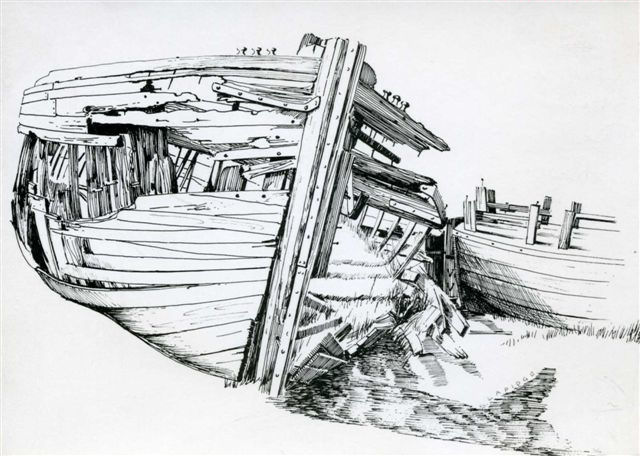Who Are We?
Following the intentional beaching of a small fleet of semi-redundant timber lighters in the winter of 1909, to strengthen the nearby eroding canal bank, the Purton Ships’ Graveyard now number some 96 vessels to born. Today it represents the largest collection of maritime artefacts on the foreshore of mainland Britain.
The ongoing programme of research, and monitoring, over the past two decades, has discovered that this wonderful collection is in danger of being lost. In part, to the ravages of time, tide and natural attrition, but more pressingly, to the destructive hand of man.
Sadly the site, as it stands, has little legal protection and it is this that has culminated in the formation of the Friends of Purton, a group of like minded individuals, who, through an ongoing quest, hope to secure, through documentation these remains of archaeological interest.
The Friends of Purton actively engaged in a systematic programme of archaeological surveying, photography and meticulous recording of each vessel for posterity. Much of which is reproduced here for your enjoyment.
The Friends are also keen to promote the collection as a site of regional, national and international importance. Which can be enjoyed by both the local community and the world wide academic fraternity alike.
Preservation Through Documentation
Our History
The Friends of Purton Society was founded by Gloucester based Maritime Historian, Paul Barnett and it was through his efforts in bringing together a representative group of growing enthusiasts that an inaugural meeting took place on 30th November 2008

Our Mission
The Primary Objective of the Society is to protect and secure the as yet undefined site and abandoned vessels lying at Purton, Gloucestershire, collectively referred to as ‘The Purton Ships’ Graveyard’.
The aims of The Friends of Purton are:
Foster the interest of the general public, historians, archaeologists, scientists and other professionals;
Promote the understanding of this unique resource and all it can reveal;
Facilitate continued investigation and research within the site for as long as it remains possible
